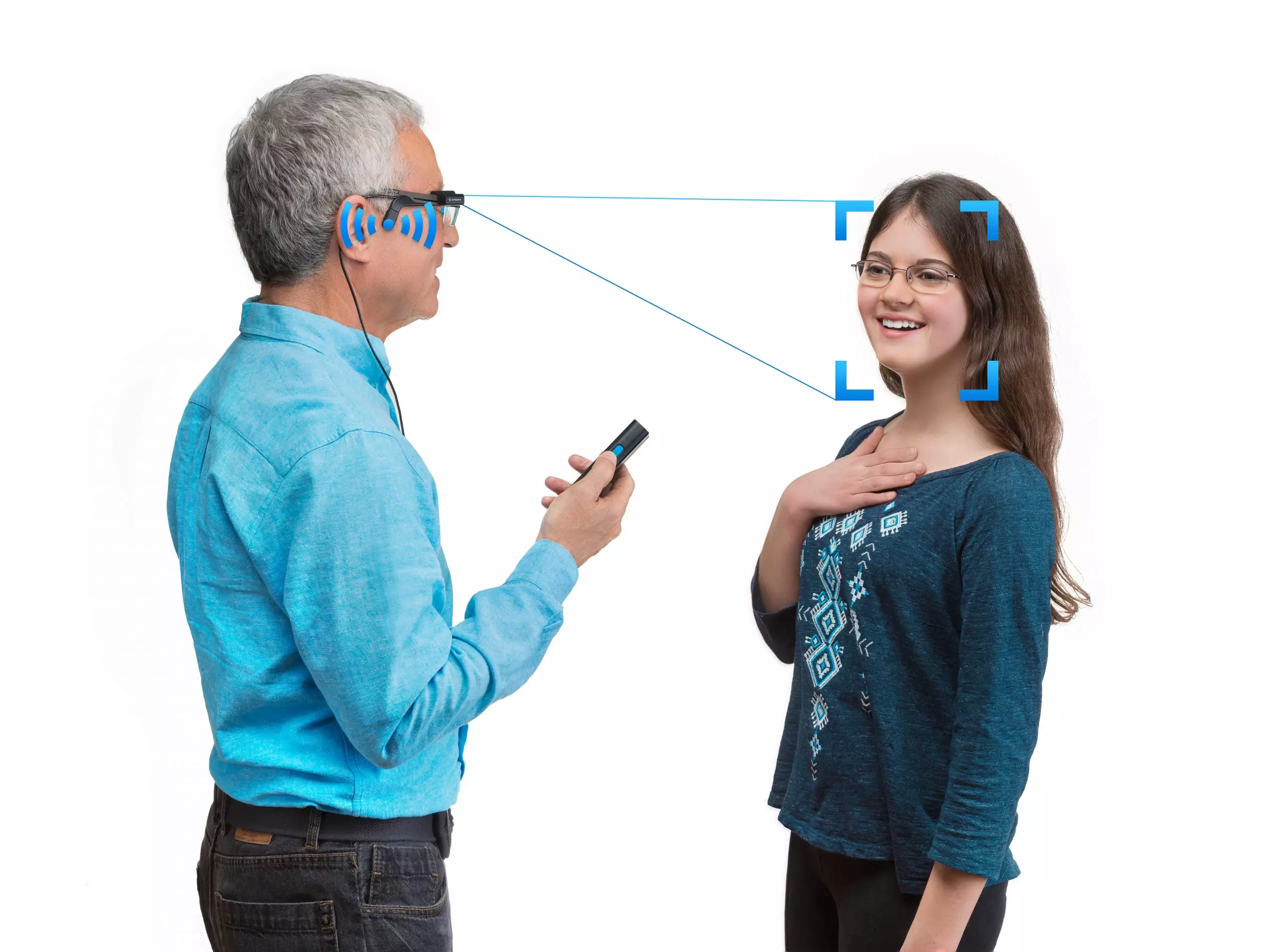Face Recognition is Here And It's Awesome!
2015-06-04 | By Orcam Staff


If I asked you to describe what your best friend looks like, what would you say?
You would probably tell me that they are short, or tall, and that they have brown/black/blonde hair that’s straight, curly or wavy. You might even be able to describe their eye color, the shape of their mouth or the length of their nose.
But would any of this information actually help me recognize your friend in a room full of people?
Probably not.
So what exactly is it that makes each face unique enough that you can distinguish one person’ from another?
This is one of the tricky questions that OrCam’s R&D division has been working to answer in order to get the facial recognition feature up and running.
Oren Tadmor leads the Object Recognition team that developed OrCam’s face recognition software algorithm. He and his team have spent months analyzing images of different faces to determine what particular details distinguish one face from another.
“To identify a face, this is easy,” he explains. “All faces look pretty much the same. They have two eyes, a mouth, ears. To identify who it is, is harder. If I ask you how you can tell the difference between two people, it’s unlikely that you will give me enough information to help me. It’s very hard to tell what a person sees when he identifies someone. There’s a very large part of the brain that does only this and it’s hard to write an algorithm that can imitate this ability.”
Facial recognition software
While modern technology has not yet found a way to perfectly mimic human capabilities, it can sometimes come amazingly close, using methods like machine learning to give computers some of the abilities of a human brain. Programs that use machine learning are able to teach themselves to perform new tasks when exposed to new data, without being explicitly programmed for these tasks.

This is what the OrCam device does each time someone uses it to takes a picture of a person’s face. The picture is stored within the device and the next time the device’s camera views the person from the photograph, the device will recognize that person, and even identify them by name.
It might sound a little bit like magic, but it’s really just facial recognition software, guided by a talented team of developers.
In order to teach OrCam’s program how to recognize an individual face, the R&D team had to provide it with hundreds of thousands of images of all different kind faces. When you, as an OrCam user, show the program just one face, the facial recognition software sorts through all of the images, rejecting those that were not a match, until only the one matching picture remains. This face recognition process occurs each time an OrCam user comes across someone that they had taken a picture of with their device, all in just a matter of moments.
But in order to hone the OrCam’s ability to provide really accurate results, Oren and his team had to do more than just show it different pictures of faces; they also had to input specific information that helps the device recognize different faces.
“For example,” says Oren,” we look for where the eyes are in relation to where the nose is, and we straighten the image and present it to the algorithm. The more information that we can provide the better it will work.”

When your mother shares a picture of you on Facebook with her friends, face recognition technology goes to work tagging you in the picture. Picasa and iPhoto similarly use face recognition to scan your pictures and identify the people in them. And if you take a picture of your friend with a digital camera, the face recognition feature will find his face and surround it with a box to help you focus.
What makes OrCam’s facial recognition software unique?
What makes OrCam’s use of face recognition different from Facebook, Picasa or iPhoto is that we need to provide our users with immediate results using a limited amount of data. Facebook may have hundreds of pictures of you that it can scan to help it identify your face in your mother’s photograph. It can also take as long as it needs to get this done. On the other hand, if we required OrCam users to take a hundred pictures of each person that they want the device to recognize, they would get frustrated very quickly.
In order for OrCam to recognize faces quickly and accurately, a one-of-a-kind program has been created by Oren’s team, that’s not only fast but also uses a minimal amount of power. This means that the OrCam battery lasts longer and all of the components are small enough to fit into a device that can be comfortably carried around all day.
OrCam‘s R&D team have worked tirelessly to develop and perfect this exciting new face recognition feature, and we’re delighted to finally be able to present it to our users.



